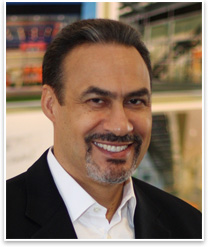Doer’s Profile
Philip G. Freelon, FAIA, LEED-AP
 Summary: Philip G. Freelon, FAIA, LEED-AP, is the founder of The Freelon Group, which since 1990 has grown into a practice focusing on college/university, transportation/aviation, and museum/cultural center projects. Freelon’s firm has successfully delivered award-winning building design within a collaborative and innovative studio environment. The firm has completed major museum projects in Baltimore and San Francisco and has recently been selected by the Smithsonian Institution to lead the planning team for the new National Museum of African American History and Culture to be located on the National Mall in Washington, D.C. Freelon is the 2009 recipient of the AIA Thomas Jefferson Award for Public Architecture. Summary: Philip G. Freelon, FAIA, LEED-AP, is the founder of The Freelon Group, which since 1990 has grown into a practice focusing on college/university, transportation/aviation, and museum/cultural center projects. Freelon’s firm has successfully delivered award-winning building design within a collaborative and innovative studio environment. The firm has completed major museum projects in Baltimore and San Francisco and has recently been selected by the Smithsonian Institution to lead the planning team for the new National Museum of African American History and Culture to be located on the National Mall in Washington, D.C. Freelon is the 2009 recipient of the AIA Thomas Jefferson Award for Public Architecture.
At the upcoming 2009 AIA Convention in San Francisco, Freelon is one of 10 emerging voices featured at the Saturday plenary session—Focus on Contemporary Architecture: Critical and New Opinions—where award-winning architects will present their work in a fast-paced presentation of dynamic images, animations, and film and video clips, followed by a moderated panel discussion. Multidisciplinary, multicultural, and wildly diverse in their practices, Freelon and the other emerging voices will offer a multitude of ways to tackle the issues facing architects today.
What is your design philosophy?
It is important to note that most of our work is in the public sector. It varies greatly by building type and by configuration. Quite simply, our aesthetic is determined by the challenge of a design problem. We don’t bring a preconceived set of forms or images to the work. We listen, we engage the client, and then we look for the appropriate solution that is also responsive to the particular vernacular, site, or context. Someone looking at our work will notice that the buildings are all different. And given what I just said, they are necessarily different because the clients and the sites are different.
What will be interesting about the plenary session at the AIA convention?
I would think the architects attending the convention would be interested in the broad range of practices that will be represented there. I am participating because it was an interesting topic to me. I think that one of the reasons you mix it up like this is because there will be some unexpected moments of education and enlightenment that no one can predict. It’s too soon to say what the takeaways will be when you don’t know exactly where the conversation will be going, the nature of the content of each of these many individuals, or their contribution to the panel. Part of the excitement of this is coming to see what will happen.
Where do you think the profession will be in 5 or 10 years?
In five or 10 years I would like to see the make-up of the profession more in line with the general population. I think the profession is lacking diversity, which is unfortunate not only for the people who are missing out on such a great career, but especially for the profession itself and our clients who may not be getting the full value of the kinds of experiences and talent that might be overlooked right now. I would hope that in a decade or less we would see a move toward greater diversity and all the advances that come with it. And I expect that we will get there.
What are one or two key things architects need to know to be successful?
It depends on the specialty because this is such a broad question. There are the basic tools that architects need to learn in school and in the internship, and you continue learning throughout. So a tool that everyone needs to understand and embrace is continuing education and life-long learning. Learning doesn’t stop after you get your license or graduate from architecture school. You continually have to renew and refresh the knowledge base and avail yourself of current happenings of the profession and around the profession. If you do that you’ll discover lots of other things you need to know. |


 Summary:
Summary: